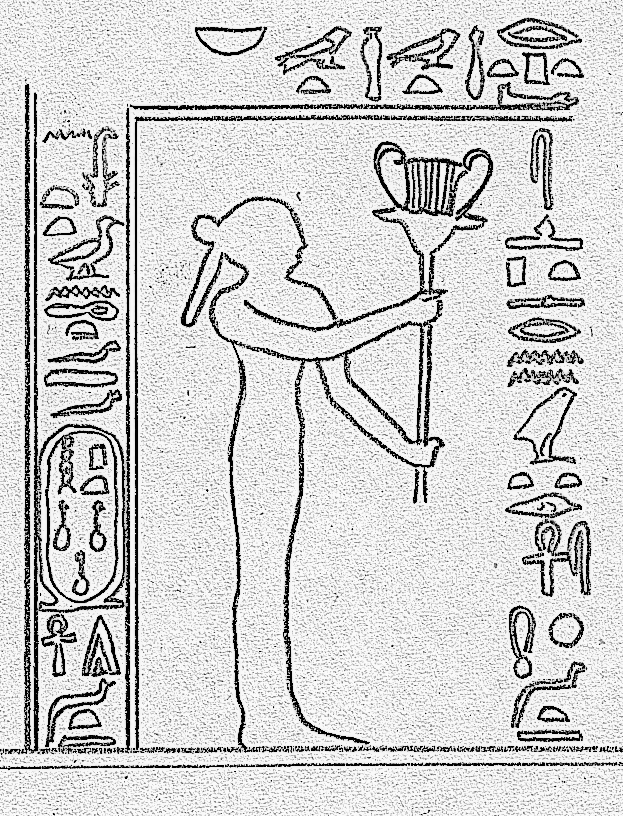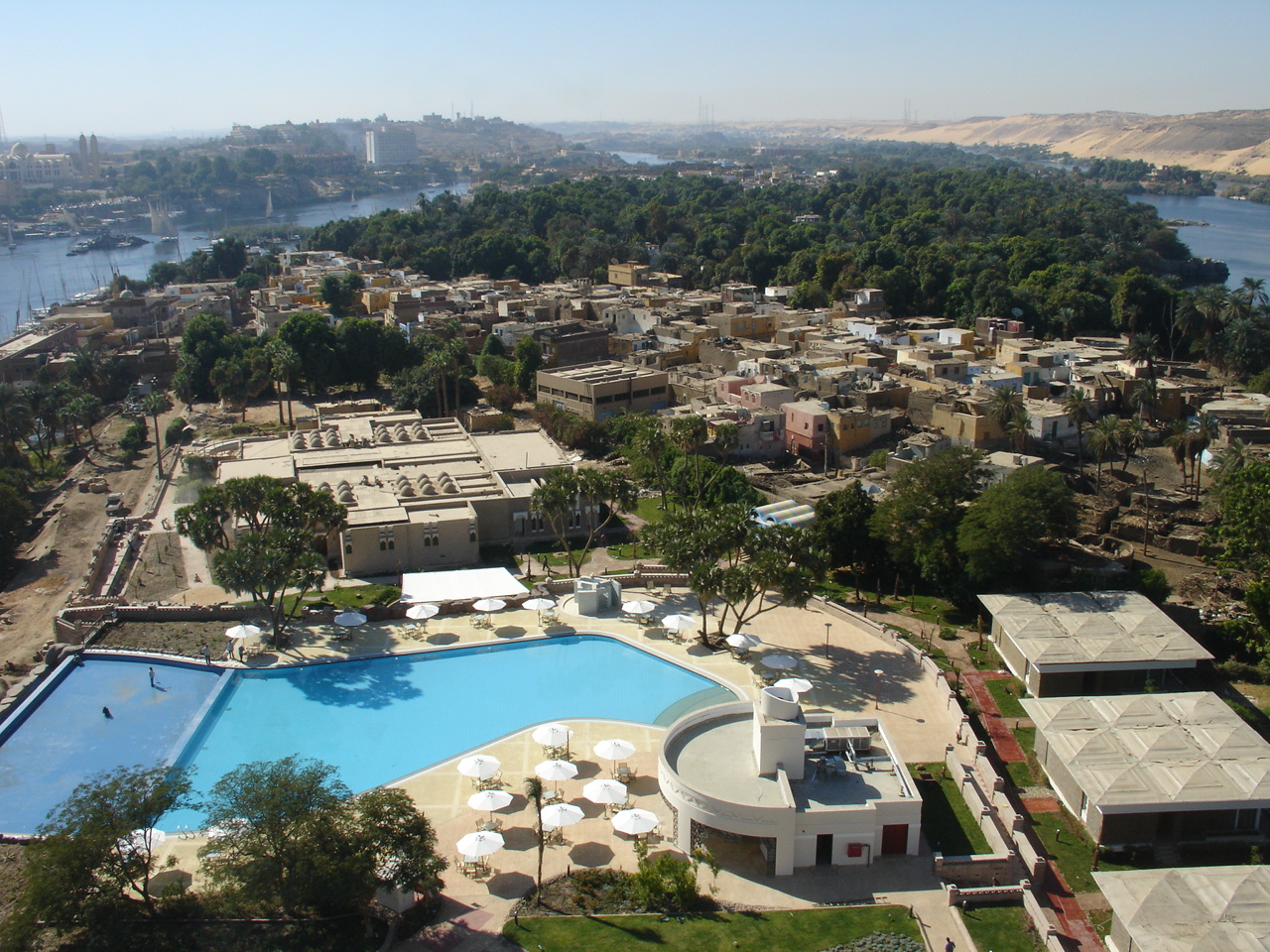|
Neferuptah
Neferuptah or Ptahneferu (“Beauty of Ptah”) was a daughter of the Egyptian king Amenemhat III (c. 1860 BC to 1814 BC) of the 12th Dynasty. Her sister was the Pharaoh Sobekneferu (“Beauty of Sobek”). Biography Neferuptah is one of the first royal women whose name was written inside a cartouche. Although she never had the title 'king's wife', she must have had a special status; it is possible she was regarded as a future ruler., p.98 Her titles included '' member of the elite, great of favour, great of praise'' and ''beloved king's daughter of his body''. A burial for her was prepared in the tomb of her father at Hawara. However, she was not buried there, but in a small pyramid at Hawara. Her tomb was found intact in 1956 and still contained her jewellery, a granite sarcophagus, three silver vases and other objects. The granite sarcophagus was inscribed with a short offering formula. Inside the sarcophagus were found the decayed remains of two wooden coffins. The oute ... [...More Info...] [...Related Items...] OR: [Wikipedia] [Google] [Baidu] |
Amenemhat III
:''See Amenemhat, for other individuals with this name.'' Amenemhat III ( Ancient Egyptian: ''Ỉmn-m-hꜣt'' meaning 'Amun is at the forefront'), also known as Amenemhet III, was a pharaoh of ancient Egypt and the sixth king of the Twelfth Dynasty of the Middle Kingdom. He was elevated to throne as co-regent by his father Senusret III, with whom he shared the throne as the active king for twenty years. During his reign, Egypt attained its cultural and economic zenith of the Middle Kingdom. The aggressive military and domestic policies of Senusret III, which re-subjugated Nubia and wrested power from the nomarchs, allowed Amenemhat III to inherit a stable and peaceful Egypt. He directed his efforts towards an extensive building program with particular focus on Faiyum. Here he dedicated a temple to Sobek, a chapel to Renenutet, erected two colossal statues of himself in Biahmu, and contributed to excavation of Lake Moeris. He built for himself two pyramids at Dahshur an ... [...More Info...] [...Related Items...] OR: [Wikipedia] [Google] [Baidu] |
Sobekneferu
, image = File:Statue of Sobekneferu (Berlin Egyptian Museum 14475).jpg , image_alt = Partially defaced bust of a female , caption = Statue of Sobekneferu , reign = 3 years, 10 months, and 24 days according to the Turin Canon in the mid 18th century BC. , predecessor = Amenemhat IV , successor = Sobekhotep I or Wegaf , prenomen = ''kꜣ-sbk-rꜥ'' Ka-sobek-re The ka of Sobek-Re , prenomen_hiero = N5-I4-D28 , nomen = ''sbk-nfrw'' Sobek-neferu / Neferu-sobek Beauty of Sobek ''sbk-šdt-nfrw'' Sobek-shedet-neferu Beauty of Sobek, lord of Shedyt , nomen_hiero = , horus = ''mryt-rꜥ'' Meryt-re Beloved of Re , horus_hiero = , nebty = ''sꜣt-sḫm-nbt-tꜣwy'' Sat-sekhem-nebet-tawy The daughter of the powerful one is, Mistress of the Two Lands , nebty_hiero = X1:G39-S42-V30:X1-N16:N16 , golden = ''ḏdt-ḫꜥw'' Djedet-khau Stable of appearances , golden_hiero = X1:R11*N28*G43:S12 , spouse = Amenemhat IV? , children = , dynasty = Twelfth Dyn ... [...More Info...] [...Related Items...] OR: [Wikipedia] [Google] [Baidu] |
12th Dynasty
The Twelfth Dynasty of ancient Egypt (Dynasty XII) is considered to be the apex of the Middle Kingdom by Egyptologists. It often is combined with the Eleventh, Thirteenth, and Fourteenth dynasties under the group title, Middle Kingdom. Some scholars only consider the 11th and 12th dynasties to be part of the Middle Kingdom. History The chronology of the Twelfth Dynasty is the most stable of any period before the New Kingdom. The Turin Royal Canon gives 213 years (1991–1778 BC). Manetho stated that it was based in Thebes, but from contemporary records it is clear that the first king of this dynasty, Amenemhat I, moved its capital to a new city named "Amenemhat-itj-tawy" ("Amenemhat the Seizer of the Two Lands"), more simply called, Itjtawy. The location of Itjtawy has not been discovered yet, but is thought to be near the Fayyum, probably near the royal graveyards at el-Lisht. The order of its rulers of the Twelfth Dynasty is well known from several sources: two lists r ... [...More Info...] [...Related Items...] OR: [Wikipedia] [Google] [Baidu] |
Relief Neferuptah By Khuner
Relief is a sculptural method in which the sculpted pieces are bonded to a solid background of the same material. The term ''relief'' is from the Latin verb ''relevo'', to raise. To create a sculpture in relief is to give the impression that the sculpted material has been raised above the background plane. When a relief is carved into a flat surface of stone (relief sculpture) or wood (relief carving), the field is actually lowered, leaving the unsculpted areas seeming higher. The approach requires a lot of chiselling away of the background, which takes a long time. On the other hand, a relief saves forming the rear of a subject, and is less fragile and more securely fixed than a sculpture in the round, especially one of a standing figure where the ankles are a potential weak point, particularly in stone. In other materials such as metal, clay, plaster stucco, ceramics or papier-mâché the form can be simply added to or raised up from the background. Monumental bronze reliefs a ... [...More Info...] [...Related Items...] OR: [Wikipedia] [Google] [Baidu] |
Wolfram Grajetzki
Wolfram Grajetzki (born 1960, in Berlin) is a German Egyptologist. He studied at Free University of Berlin and made his Doctor of Philosophy at the Humboldt University of Berlin. He performed excavations in Egypt, but also in Pakistan. He published articles and several books on the Egyptian Middle Kingdom The Middle Kingdom of Egypt (also known as The Period of Reunification) is the period in the history of ancient Egypt following a period of political division known as the First Intermediate Period. The Middle Kingdom lasted from approximately ..., on administration, burial customs and queens. He is also a researcher at the Centre for Advanced Spatial Analysis, University College London, UK, working on the project 'Digital Egypt for Universities'. Works *''Two Treasurers of the Late Middle Kingdom'' (British Archaeological Report S1007) Oxford, 2001 ISSN 0143-3067 *''Burial Customs in Ancient Egypt: Life in Death for Rich and Poor'' Duckworth Egyptology, London 2003 *' ... [...More Info...] [...Related Items...] OR: [Wikipedia] [Google] [Baidu] |
Princesses Of The Twelfth Dynasty Of Egypt
Princess is a regal rank and the feminine equivalent of prince (from Latin ''princeps'', meaning principal citizen). Most often, the term has been used for the consort of a prince, or for the daughter of a king or prince. Princess as a substantive title Some princesses are reigning monarchs of principalities. There have been fewer instances of reigning princesses than reigning princes, as most principalities excluded women from inheriting the throne. Examples of princesses regnant have included Constance of Antioch, princess regnant of Antioch in the 12th century. Since the President of France, an office for which women are eligible, is ''ex-officio'' a Co-Prince of Andorra, then Andorra could theoretically be jointly ruled by a princess. Princess as a courtesy title Descendants of monarchs For many centuries, the title "princess" was not regularly used for a monarch's daughter, who, in English, might simply be called "Lady". Old English had no female equivalent of "prince ... [...More Info...] [...Related Items...] OR: [Wikipedia] [Google] [Baidu] |
Elephantine
Elephantine ( ; ; arz, جزيرة الفنتين; el, Ἐλεφαντίνη ''Elephantíne''; , ) is an island on the Nile, forming part of the city of Aswan in Upper Egypt. The archaeological sites on the island were inscribed on the UNESCO World Heritage List in 1979 along with other examples of Upper Egyptian architecture, as part of the " Nubian Monuments from Abu Simbel to Philae" (despite Elephantine being neither Nubian, nor between Abu Simbel and Philae). Geography Elephantine is from north to south, and is across at its widest point. The layout of this and other nearby islands in Aswan can be seen from west bank hillsides along the Nile. The island is located just downstream of the First Cataract, at the southern border of Upper Egypt with Lower Nubia. This region above is referred to as Upper Egypt because it is further up the Nile. The island may have received its name after its shape, which in aerial views is similar to that of an elephant tusk, or from the r ... [...More Info...] [...Related Items...] OR: [Wikipedia] [Google] [Baidu] |
Lahun
El Lahun ( ar, اللاهون ''El Lāhūn,'' alt. Illahun, Lahun, or Kahun (the latter being a neologism coined by archaeologist William Matthew Flinders Petrie) is a workmen's village in Faiyum, Egypt. El Lahun is associated with the Pyramid of Senusret II ( gr, Sesostris II), which is located near the modern town, and is often called the Pyramid of Lahun. The ancient name of the site was ''rꜣ-ḥn.t'', literally, "Mouth (or Opening) of the Canal"). It was known as Ptolemais Hormos () in Ptolemaic Egypt. Overview Like the other Twelfth Dynasty pyramids in the Faiyum, the Pyramid of Lahun is made of mudbrick, but here the core of the pyramid consists of a network of stone walls that were infilled by mudbrick. This approach was probably intended to ensure the stability of the brick structure. Unusually, despite a Pyramid Temple on the east side, the entrance to the pyramid is on the south. The archaeologist Flinders Petrie nevertheless spent considerable time searching for it ... [...More Info...] [...Related Items...] OR: [Wikipedia] [Google] [Baidu] |
Hawara
Hawara is an archaeological site of Ancient Egypt, south of the site of Crocodilopolis ('Arsinoë', also known as 'Medinet al-Faiyum') at the entrance to the depression of the Fayyum oasis. It is the site of a pyramid built by the Pharaoh Amenemhat III in the 19th century BC. History Amenemhat III was the last powerful ruler of the 12th Dynasty, and the pyramid he built at Hawara is believed to post-date the so-called "Black Pyramid" built by the same ruler at Dahshur. This is believed to have been Amenemhet's final resting place. At Hawara there was also the intact (pyramid) tomb of Neferu-Ptah, daughter of Amenemhet III. This tomb was found about 2 km south of the king's pyramid. In common with the Middle Kingdom pyramids constructed after Amenemhat II, it was built of mudbrick round a core of limestone passages and burial chambers, and faced with limestone. Most of the facing stone was later pillaged for use in other buildings— a fate common to almost all of ... [...More Info...] [...Related Items...] OR: [Wikipedia] [Google] [Baidu] |
Hatshepsut
Hatshepsut (; also Hatchepsut; Egyptian: '' ḥꜣt- špswt'' "Foremost of Noble Ladies"; or Hatasu c. 1507–1458 BC) was the fifth pharaoh of the Eighteenth Dynasty of Egypt. She was the second historically confirmed female pharaoh, after Sobekneferu. (Various other women may have also ruled as pharaohs or at least regents before Hatshepsut, as early as Neithhotep around 1,600 years prior.) Hatshepsut came to the throne of Egypt in 1478 BC. As the principal wife of Thutmose II, Hatshepsut initially ruled as regent to Thutmose III, a son of Thutmose II by another wife and the first male heir. While Thutmose III had inherited the throne at about two years old, Hatshepsut continued to rule by asserting her lineage as the daughter and only child of Thutmose I and his primary wife, Ahmose. Her husband Thutmose II was the son of Thutmose I and a secondary wife named Mutnofret, who carried the title 'King's daughter' and was probably a child of Ahmose I. Hatshepsut an ... [...More Info...] [...Related Items...] OR: [Wikipedia] [Google] [Baidu] |

.jpg)




